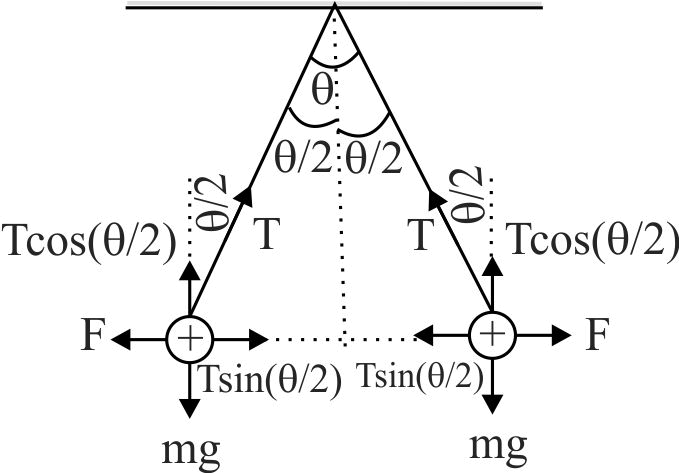358095 Two identical charged spheres of material density \(\rho \), suspended from the same point by inextensible strings of equal length make an angle \(\theta \) between the strings. When suspended in a liquid of density \(s\) the angle \(\theta \) remains the same. The dielectric constant \(K\) of the liquid is
358095 Two identical charged spheres of material density \(\rho \), suspended from the same point by inextensible strings of equal length make an angle \(\theta \) between the strings. When suspended in a liquid of density \(s\) the angle \(\theta \) remains the same. The dielectric constant \(K\) of the liquid is
358095 Two identical charged spheres of material density \(\rho \), suspended from the same point by inextensible strings of equal length make an angle \(\theta \) between the strings. When suspended in a liquid of density \(s\) the angle \(\theta \) remains the same. The dielectric constant \(K\) of the liquid is
358095 Two identical charged spheres of material density \(\rho \), suspended from the same point by inextensible strings of equal length make an angle \(\theta \) between the strings. When suspended in a liquid of density \(s\) the angle \(\theta \) remains the same. The dielectric constant \(K\) of the liquid is
358095 Two identical charged spheres of material density \(\rho \), suspended from the same point by inextensible strings of equal length make an angle \(\theta \) between the strings. When suspended in a liquid of density \(s\) the angle \(\theta \) remains the same. The dielectric constant \(K\) of the liquid is


